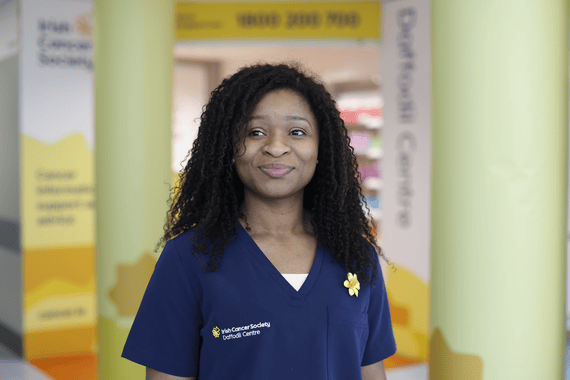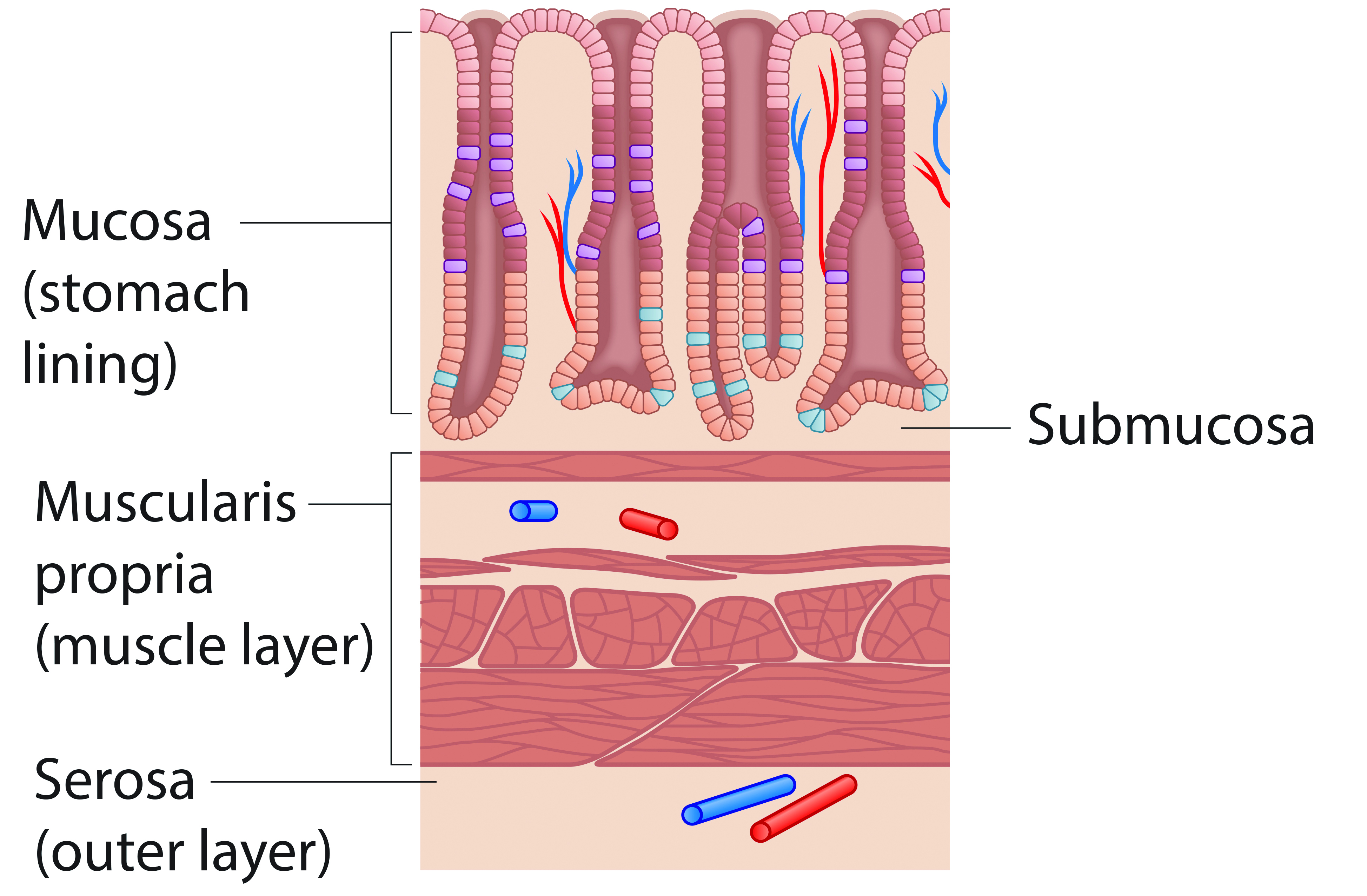Stomach cancer
Diagnosis and tests
Diagnosing stomach cancer
Your family doctor (GP) will talk to you about your symptoms. For example, if you’ve lost any weight, had difficulty eating. They will probably check your blood pressure, pulse and weight, and may take a stool (poo) sample.
Your GP will refer you to hospital if they think you need more tests. Tests you might have include:
A long tube with a light and camera inside is passed down your throat and into your stomach to examine it and take samples of any unusual-looking areas.
Read more about having an endoscopy.
An ultrasound probe is passed through a tube that goes into your body through your mouth. It can take ultrasound pictures from inside your body using sound waves.
Read more about having an EUS.
A barium meal is a special X-ray test. Before the test, you drink a white chalky liquid that shows up on the X-rays. It can help to show any abnormal areas.
Read more about having a barium meal.
A gastroenterologist is a doctor who specialises in treating problems with the digestive system.

If you are diagnosed with stomach cancer, we're here for you.
Our cancer nurses are here if you need information or just want to talk. They can help you to understand your diagnosis and what to expect, send you information and tell you about our services.
Further tests for stomach cancer
You may need further tests to give your doctors more information about your general health and about the cancer. For example:
A type of X-ray that gives a detailed picture of the tissues inside your body.
Read more about CT scans.
Your doctor will make a small cut in your tummy (abdomen) and put in a small, thin flexible tube with a camera attached to it. This lets your doctor look for any abnormal changes. A sample of cells (biopsy) can be taken at this time. This test is done with a general anaesthetic.
Read more about having a laparoscopy.
A device like a microphone passed over your tummy to give a picture of your digestive system. It can show any abnormal changes.
Read more about ultrasound scans.
A scan that uses magnetic energy to build up a picture of the tissues inside your body.
Read more about MRI scans.
A radioactive injection that will show up any cancer spread to other parts of your body on a CT scan picture.
Read more about PET scans.
Taking a sample of the cells in the stomach and looking at them under a microscope. A biopsy can be taken during an EUS or laparoscopy. This test can confirm a diagnosis of stomach cancer.
Sometimes you may need surgery to find out the exact stage of your cancer. This means that your treatment plan may only be decided or may change after you have had surgery.
The tests you have can help to stage your cancer. This means finding out the size and position of the cancer.
Some tests may be used see how you are responding to treatment.
Waiting for test results
While some results may come back quickly, others may take a few weeks. Waiting for results can be an anxious time. It may help to talk things over with your doctor or nurse or with a relative or close friend. You can also call our Support Line on 1800 200 700 or visit a Daffodil Centre to speak to a cancer nurse.
What are the stages of stomach cancer?
Staging means finding out how big the cancer is and if it has spread to other parts of your body. Staging will help your doctor to plan the best treatment for you.
There are four stages of stomach cancer, 1 to 4. The stage describes:
- How far the cancer has spread through the various layers of your stomach lining
- How many lymph nodes near or far are affected
- Whether or not the cancer has spread to other organs away from the stomach (metastasis)
A higher number means a more advanced cancer.

The cancer is in the inner lining (mucosa) of your stomach only.
Describes one of the following situations:
- The cancer is still in the lining and may be affecting 1-2 nearby lymph nodes.
- The cancer has grown into the muscle layer but no lymph nodes are affected.
Describes one of the following situations:
- The cancer is still in the lining of your stomach but 3–6 lymph nodes contain cancer cells.
- The cancer has spread to the muscle layer of your stomach and 1-2 nearby lymph nodes are affected.
- The cancer has spread to the outer layer of your stomach (serosa).
Describes one of the following situations:
- The cancer is still within the lining of the stomach wall but 7 or more lymph nodes contain cancer cells.
- The cancer has grown into the muscle layer of the stomach and between 3 and 6 lymph nodes are affected.
- The cancer is in the outer layer (serosa) of the stomach and in 1 or 2 nearby lymph nodes.
- The cancer has grown through the outer lining of the stomach but no lymph nodes are affected.
Describes one of the following situations:
- The cancer has spread to the muscle layer and more than 7 nearby lymph nodes are affected.
- The cancer has grown into the outer lining of the stomach and 3-6 lymph nodes are affected.
- The cancer has grown right through the stomach wall into nearby tissues and 1-2 lymph nodes are affected.
Describes one of the following situations:
- The cancer has grown into the outer lining of the stomach and more than 7 lymph nodes are affected.
- The cancer has grown through the stomach wall and between 3 and 6 lymph nodes contain cancer.
- The cancer has grown through the stomach wall into nearby tissues and organs, like the spleen or intestines, and lymph nodes nearby may be affected.
Describes one of the following situations:
- The cancer has grown right through the stomach wall and more than 7 nearby lymph nodes contain cancer.
- The cancer has grown right through the stomach wall into nearby lymph nodes, tissues and organs, like the spleen or intestines.
The cancer has spread to other distant organs such as the lungs, liver or bones.
Knowing the stage of your cancer helps your team to plan the best treatment for you.




Get help & support

Support Line
Free support pack

